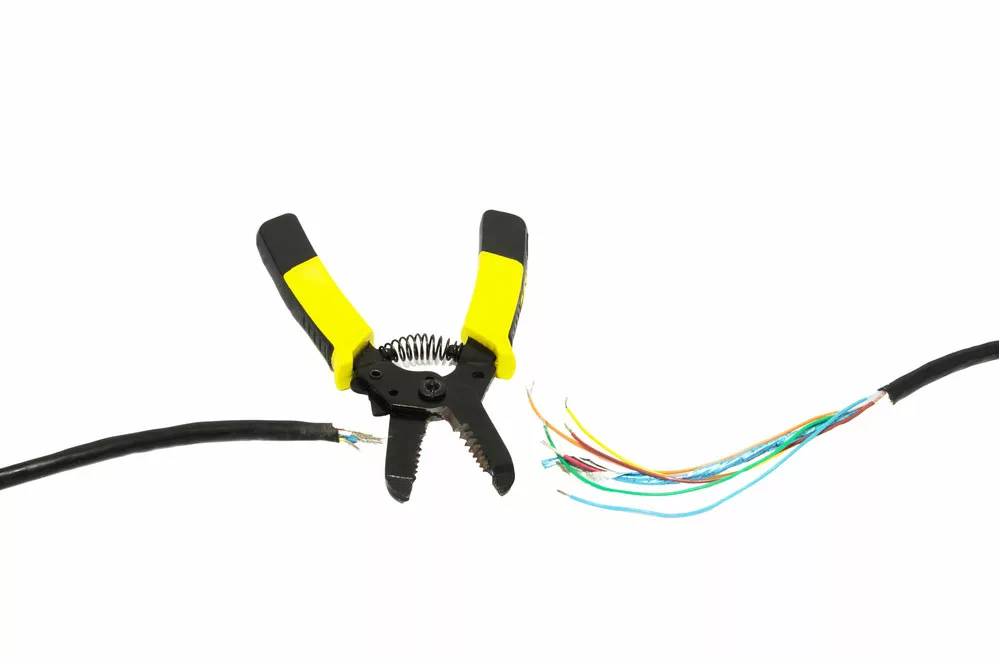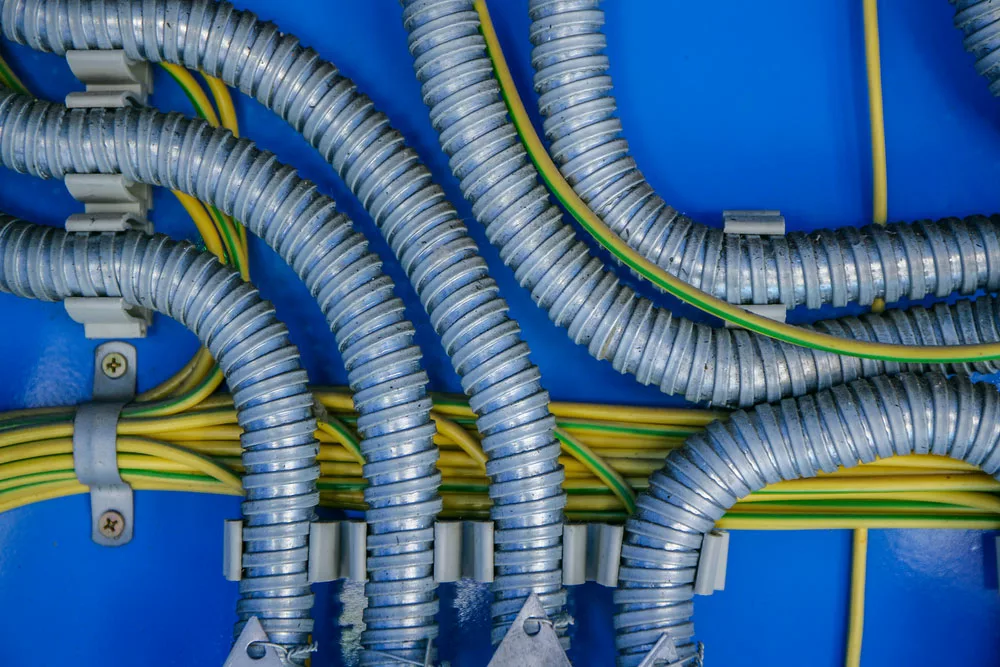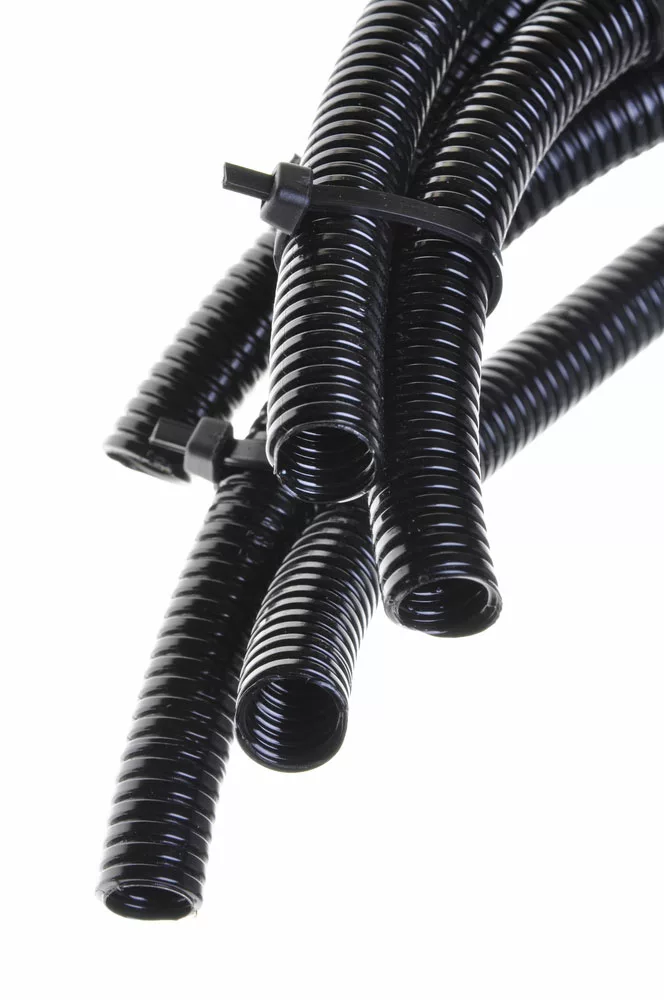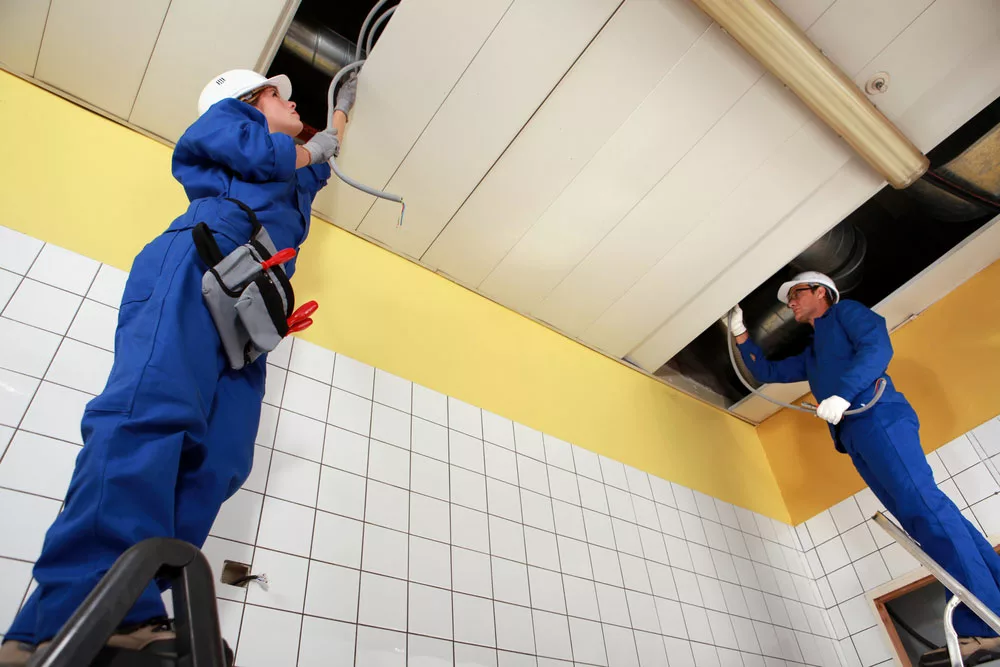Generally, conduits are a safety net to electrical wires as they offer a protective barrier against the surrounding harmful conditions during external and internal applications. In addition, it adds to sleek and stylish-looking wires running down or through your walls. Today, we’ll show you the best way to run wire through a wall using various tools like a conduit mouse and a clear guideline.
Table of Contents
- Best Way to Run Wire Through a Wall: Method 1: String Method
- Best Way to Run Wire Through a Wall: Method 2: Conduit Mouse Method
- Best Way to Run Wire Through a Wall: Method 3: Fishing Weight Method
- Best Way to Run Wire Through a Wall: Method 4: Fish Tape Method
- Best Way to Run Wire Through a Wall: Method 5: Joint Fish Tape Method
- Best Way to Run Wire Through a Wall: Other Tips for Running Wire Through a Wall
- Conclusion
Best Way to Run Wire Through a Wall: Method 1: String Method
Our first method is, by far, the easiest procedure for running a wire through a conduit using a pull string. A straight and short piece of conduit is preferable for this method. Longer conduit pieces will need a different method.
Step-by-step guide
- Start by tying a strong string to a non-flexible and long rod.
- Next, pass the rod through a conduit, beginning with the tied end, till you see the string at the opposite side of the conduit.
- Thirdly, attach your electrical wires to the strings on the rod.
- You will eventually get to pull the wire along while pulling both the string and rod through the conduit.
Best Way to Run Wire Through a Wall: Method 2: Conduit Mouse Method
The second method uses a conduit piston or conduit mouse rather than a rod, like in the string method. Although the conduit length can cause limitations in the method, it is still useful in complexly twisted/turned conduits.
Step-to-step guide
- First, tie a light but strong string on your conduit while ensuring a wire loop runs through the mouse.
- Then, position the mouse at the conduit’s starting end and ensure it fully occupies the conduit space.
- Now, use a shop vacuum on end opposite the starting end of the conduit. Secure the vacuum hose perfectly on that end to generate the best suction force.
- Turn the vacuum on and employ it until it sucks the mouse to the opposite conduit end. Then turn it off and detach the mouse.
- Next, unfasten the string from the piston’s wire loop and attach it to the wire.
- Finally, to get the wire into the conduit, pull the other end of the string.
Best Way to Run Wire Through a Wall: Method 3: Fishing Weight Method
The third method employs a heavy fishing weight to help a wire through the conduit.
Step-to-step guide
- First, use a fishing wire or string to tie a hefty fishing weight to one wire end to realize a 2–3-inch length. Ensure the wire is thick enough to pass through a lubricated wire.
- Then, insert your weight in the conduit while adjusting the wiring placement behind the weight.
- Insert the fishing weight into a conduit and lift the end of that free-moving conduit above the weight for gravity to draw it along. Next, modify the conduit orientation as needed to get the weight around conduit curves and pull all the wire through the conduit.
Best Way to Run Wire Through a Wall: Method 4: Fish Tape Method
The fish tape method helps draw wires through curved conduits using fish tapes, linesman pliers, and wire strippers. Fish tapes are flat and long metal wires looped interiorly in a spool having a hook.

Step-to-step guide
- First and foremost, insert the tap’s end into the end of the conduit you’ll be pulling it out from. Keep pressing the tape through into the conduit while unwinding the spool in the process. Once the fish tape end comes out of the conduit end, cease to feed the tape.
- Next, use wire strippers to remove insulation from the wire end.
- Thirdly, twist the wires together using pliers, thereby aligning the insulation. Then, attach the longest wire to the fish tape’s hook by bending it into a hook. Secure the attachment site using electrical tape once you’ve fastened the hooks to guarantee no detachment during the pulling process.
- Finally, while a buddy feeds the wire, pull the fish tape into the conduit (a process that pulls the wire).
Best Way to Run Wire Through a Wall: Method 5: Joint Fish Tape Method
The joint fish tape method is ideal in conduit with existing wires or with 90° turns.
Step-to-step guide
- Open a fish tape and make a bunch of loops around the first tape end using a strong string. Secure it with electrical tape.
- Secondly, hook up the end of the second fish tape and check that the ends can catch on each other.
- Further on, stand at the conduit’s two ends with your partner, and have one modified fish tape each. Start feeding each end of the tapes till they meet at the conduit’s problem point.
- Twist the looped end so it can grab a loop when the tapes meet and tug to confirm. Finally, pull one end of the fish tape to drag the other tape along through the conduit after connecting the wires.
Best Way to Run Wire Through a Wall: Other Tips for Running Wire Through a Wall
Here are some additional tips and tricks that you can use to ease the process of running wire through your wall.

(Distribution of wires)
- First and foremost, check and measure your conduit’s length from one end to the other. Ensure it does not have curves that may disrupt the process. Also, the method you settle for should accommodate your conduit’s shape and length. Remember that smooth PVC conduits will only catch wires at the joints, while conduits having corrugated edges will capture wires easily.

(Corrugated conduits)
- Secondly, have a partner. When tackling a complex or simple process of running a conduit, a partner is more than necessary. For instance, they could help add lubricant while pulling the wire and so forth.

(Two electricians repairing ceiling wiring)
- Then, lubricate your wire. Generally, a straight conduit or ones with turns and bends are hard to pull. Therefore, applying a non-conductive lubricant such as gel on a wire should help you swiftly feed the wire into the conduit.
- Inspect the local cable laws and codes and ascertain their permissiveness before usage. For instance, the National Electrical Code approves sheathed cables, and you can replace insulated wiring with them. Unfortunately, they are not ideal for outdoor applications, and not all countries allow their usage.
- Lastly, you can look for existing cables and wires in the conduits to use as pull strings in your fresh wiring. Ensure the wires are unbroken.
Conclusion
We hope you’ve grasped a method to kick off your DIY wiring process. Caution, if you are not well acquainted with electrical wiring, kindly contact a licensed electrician. Only carry out the above methods when fully knowledgeable.
Also, if you have more questions about wiring, don’t hesitate to contact us.
